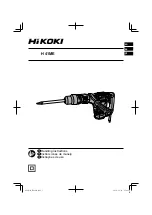
Fig. 3-5:
3.7.6 Multiple load connections with distribution terminals
3.7.7 Grounding outputs
3.8 EXTERNAL CONTROL CONNECTOR
3.8.1 General
If remotely located output distribution terminals are used, the power supply output terminals should be
connected to the distribution terminals by a pair of twisted or shielded wires. Each load should be
separately connected to the remote distribution terminals. If Remote Sensing is required, the sensing
wires should be connected to the distribution terminals or at the most critical load.
Either the positive or negative output terminals can be grounded. To avoid noise problems caused by
common-mode current flowing from the load to ground, it is recommended to ground the output
terminal as close as possible to the power supply output.
Always use two wires to connect the load to the power supply regardless of how the system is
grounded.
The external control connector, used for analog programming of the power supply, is located on the
rear panel of the unit,(Fig. 4-2, item 4). The pin assignment is shown in Fig. 3-5 below.
The External Control Connector signals are connected to the
negative output terminal. If the negative output terminal is
floated with respect to chassis ground , those signals will also
float at the same potential. Use appropriate safety measures
to prevent a shock hazard.
Fig. 3-4: Multiple load connections with distribution terminal
DISTRIBUTION
TERMINAL
LOAD #1
LOAD #2
LOAD #3
POWER
SUPPLY
+
+
+
_
_
_
+S
- V
- V
+V
+V
- S
To Dristribution Terminals
WARNING
The maximum potential (including output voltage) that either output terminal
is from ground, must not exceed the specified voltage on the front panel.
WARNING
1
14
13
2
2
- LS
- S
+LS
+S
On/Off
COM
Output Good
P
VRFV
VCVP
VRFI
VCCP
RCVP
EXTERNAL CONTROL
CONNECTOR
(ZUP rear panel view)
RCCP
1
External Control Connector pin
assignment (ZUP rear panel view)
Summary of Contents for ZUP Series
Page 2: ......
















































